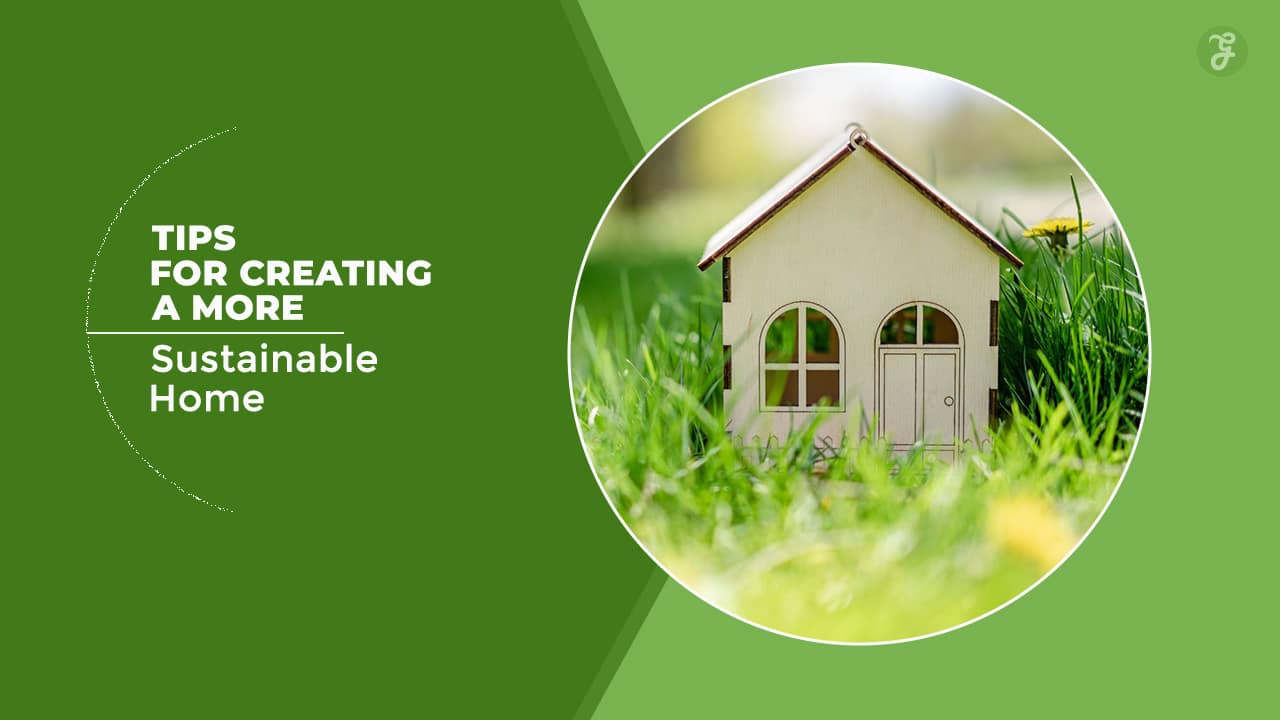Creating a sustainable home isn’t just good for the planet; it’s also good for your wallet and overall well-being. Sustainable living helps reduce waste, conserve natural resources, and lower energy costs. With rising awareness of environmental issues, more people are embracing eco-friendly lifestyles. But where do you start?
This guide provides seven practical and impactful tips for creating a sustainable and eco-friendly home, whether you’re renovating, upgrading, or simply adopting better habits.
1. Assess Your Current Environmental Impact
Before making any changes, it’s important to understand your home’s current environmental footprint. Knowing where you stand can help you identify areas to improve and track your progress.
Steps to Assess Your Impact:
- Conduct a Home Energy Audit: Many utility companies offer free or low-cost audits to help you understand your energy usage. You can also use DIY tools like energy monitors.
- Monitor Water Usage: Check your water bills to identify patterns and areas of overuse.
- Waste Audit: Analyze the waste you produce weekly to see how much can be recycled, composted, or reduced.
| Assessment Tool | Purpose | Estimated Cost |
|---|---|---|
| Energy Monitors | Track real-time electricity usage | $25-$50 |
| Smart Water Meters | Monitor water consumption | $100-$200 |
| Home Energy Audit Services | Identify inefficiencies | Free-$300 |
2. Upgrade to Energy-Efficient Appliances
Replacing outdated appliances with energy-efficient ones can significantly reduce your home’s energy consumption. Look for the ENERGY STAR label, which guarantees compliance with energy-saving standards.
Benefits of Energy-Efficient Appliances:
- Lower Utility Bills: Save up to 30% on electricity costs.
- Reduced Environmental Impact: Less energy usage means fewer carbon emissions.
- Enhanced Performance: Many modern appliances work more effectively and have additional features.
| Appliance | Energy-Saving Feature | Potential Savings |
| Refrigerator | Better insulation, smart cooling | $35-$70/year |
| Washing Machine | Low water usage, faster cycles | $50-$100/year |
| Dishwasher | Efficient drying systems | $25-$50/year |
3. Tips for a More Sustainable Home: Adopt Renewable Energy Solutions
Switching to renewable energy is a transformative step toward sustainability. Solar panels, wind turbines, and geothermal systems allow you to generate clean energy right at home.
How to Start:
- Solar Panels: Ideal for sunny locations; costs have dropped significantly in recent years.
- Wind Turbines: Suitable for areas with consistent wind speeds.
- Government Incentives: Check for tax credits and rebates to offset installation costs.
| Energy Source | Key Benefits | Average Cost |
| Solar Panels | Reduce grid dependency, save money | $10,000-$30,000 |
| Wind Turbines | Generate power in windy locations | $40,000-$70,000 |
| Geothermal Heating | Eco-friendly temperature regulation | $15,000-$35,000 |
4. Improve Insulation and Sealing
A well-insulated home uses less energy to maintain comfortable temperatures. Upgrading insulation and sealing gaps reduces energy loss and improves efficiency.
Steps to Improve Insulation:
- Insulate Walls and Attics: Use eco-friendly materials like wool or cellulose.
- Seal Windows and Doors: Apply weatherstripping and caulk to close gaps.
- Install Double-Glazed Windows: These reduce heat transfer, keeping your home warm in winter and cool in summer.
| Insulation Material | Eco-Friendly Feature | Cost Per Square Foot |
| Cellulose | Recycled content, non-toxic | $0.50-$2.50 |
| Wool | Natural and biodegradable | $1.50-$3.00 |
| Fiberglass | Durable and energy-efficient | $0.40-$1.50 |
5. Reduce Water Usage
Water conservation is a key aspect of sustainable living. Simple upgrades and mindful habits can help you save water without compromising convenience.
Water-Saving Tips:
- Install Low-Flow Fixtures: Replace faucets, showerheads, and toilets with low-flow versions.
- Use Rainwater Harvesting Systems: Collect rainwater for outdoor irrigation.
- Fix Leaks Promptly: Even small leaks can waste gallons of water daily.
| Water-Saving Tool | Benefit | Estimated Savings |
| Low-Flow Showerhead | Uses 50% less water | 2,900 gallons/year |
| Dual-Flush Toilet | Reduces water per flush | 13,000 gallons/year |
| Rainwater Harvesting System | Saves water for gardening | 1,000+ gallons/year |
6. Choose Sustainable Materials for Renovations and Furniture
When updating your home, opt for materials and furniture that are environmentally friendly. These choices reduce waste and pollution.
Sustainable Material Options:
- Reclaimed Wood: Perfect for flooring, furniture, and decorative elements.
- Bamboo: A rapidly renewable resource ideal for floors and furniture.
- Recycled Materials: Use glass, metal, or composite materials for countertops and cabinets.
| Material | Why It’s Sustainable | Common Uses |
| Reclaimed Wood | Reduces deforestation | Furniture, flooring |
| Bamboo | Grows quickly, durable | Furniture, flooring |
| Recycled Glass | Diverts waste from landfills | Countertops, tiles |
7. Incorporate Smart Home Technology
Smart home devices can optimize energy usage, making it easier to maintain a sustainable home. They’re convenient, efficient, and often cost-effective.
Smart Home Devices to Consider:
- Smart Thermostats: Automatically adjust heating and cooling based on your schedule.
- Smart Lighting Systems: Control brightness and timing remotely to reduce energy waste.
- Energy Monitoring Systems: Track real-time electricity usage to identify inefficiencies.
| Smart Device | Key Feature | Average Cost |
| Smart Thermostat | Automated temperature adjustment | $100-$250 |
| Smart Lighting | Energy-efficient LED technology | $20-$50 per bulb |
| Energy Monitoring System | Provides detailed usage insights | $200-$300 |
Takeaway
Creating a sustainable home is a rewarding journey that benefits both the environment and your family. By following these seven tips for a more sustainable home, you can reduce energy and water consumption, minimize waste, and make eco-friendly choices. Start small, and gradually incorporate these changes to build a greener, more efficient home. Share these ideas with friends and family to inspire a community of sustainability.






































